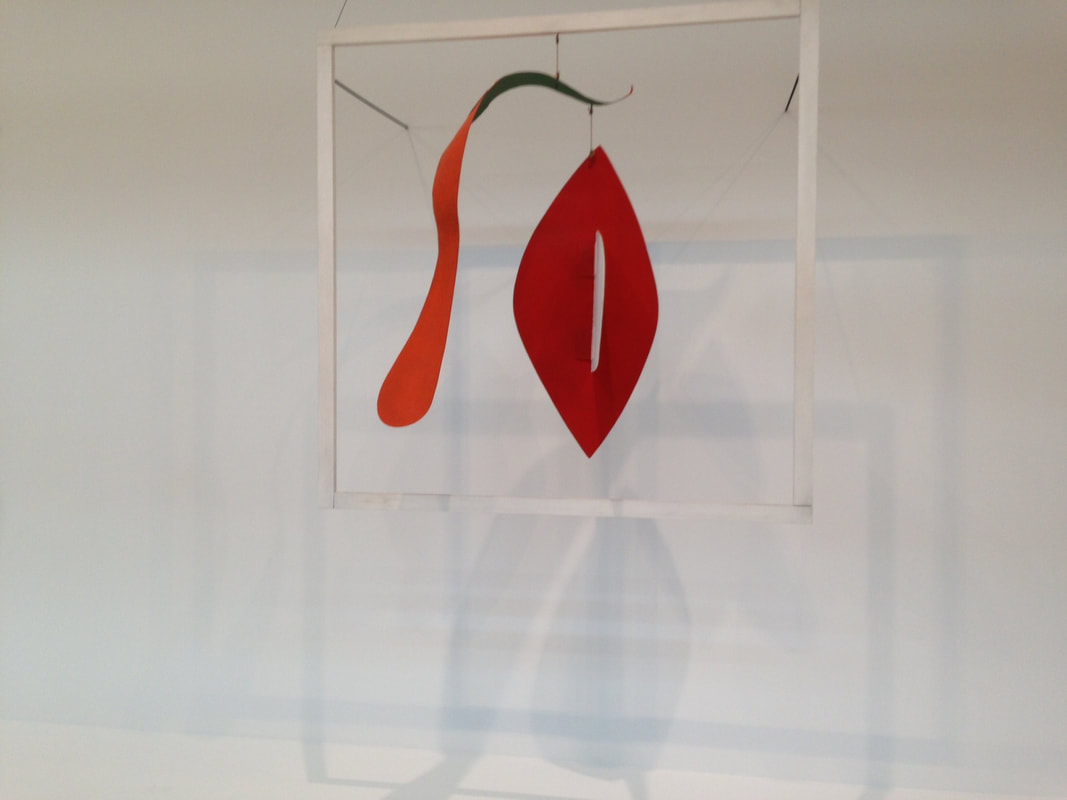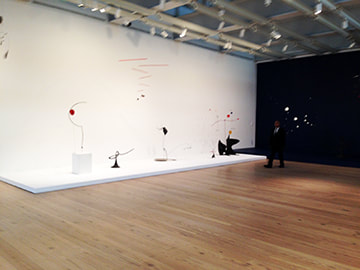|
“Calder: Hyermobility” at the Whitney Museum of American Art is an exhibit of sculptures by Alexander Calder. It focuses on the importance of motion in Calder's work.
Alexander Calder came from an artistic family. His father and grandfather were both sculptors. His mother was a professional portrait painter. Not surprisingly, Calder did art work from an early age and even had studios in the basements of several of the houses that the family occupied while he was growing up. Knowing the difficulties associated with being a professional artist, his family did not encourage Calder to follow in their footsteps. Instead, he studied to be become a mechanical engineer. Following his graduation from the Stevens Institute in 1919, Calder held a variety of jobs including being a hydraulic engineer and working as a mechanic on a steam ship. Calder, however, found this work unsatisfying and decided to make art his career. To this end, he enrolled in the Art Students League in New York. In 1926, he moved to Paris where he established a studio and became friends with a number of avant garde artists. Following a visit to Piet Mondrian's studio, he decided to embrace abstract art. During this period, Calder became interested in creating sculptures with movable parts. His early works along this line moved by cranks and motors, perhaps reflecting his engineering background. By the early 1930s, Calder had returned to the United States and his works were less mechanical. Instead, the works moved either in response to touch or to the wind. Marcel Duchamp coined the term “mobiles” to describe Calder's sculptures. The Whitney exhibit includes several of Calder's mobiles. Some are freestanding while others are suspended from the ceiling. Even when they are static - - which they are most of the time - - the graceful lines and pure colors of these sculptures make them appealing. At specified times during the day, a staff member appears and “activates” some of the sculptures. Typically, this is done by giving one part of the sculpture a gentle push setting it in motion. The movement causes the image that the viewer is seeing to change. Whereas a portion of the sculpture was say pointing in one direction originally, it points in a number of different directions as it moves. As a result, the overall shape of the sculpture changes, becoming a new image. In addition to the mobiles, the Whitney has one of Calder's large static sculptures in the center of the exhibit. These Calder sculptures were dubbed “stabiles” by Jean Arp in 1932 to distinguish them from Calder's mobiles. With a stabile, the image changes as the viewer moves around the object. In this, the process is not different than traditional sculpture. However, here the forms are abstract - - graceful arches arising from seemingly delicate points. Over the last 90 years or so, the public has become familiar with abstract sculpture. However, the elegance of Calder's designs, both static and kinetic, are such as to have enduring appeal. |
AuthorRich Wagner is a writer, photographer and artist. Archives
November 2018
Categories
All
|


 RSS Feed
RSS Feed